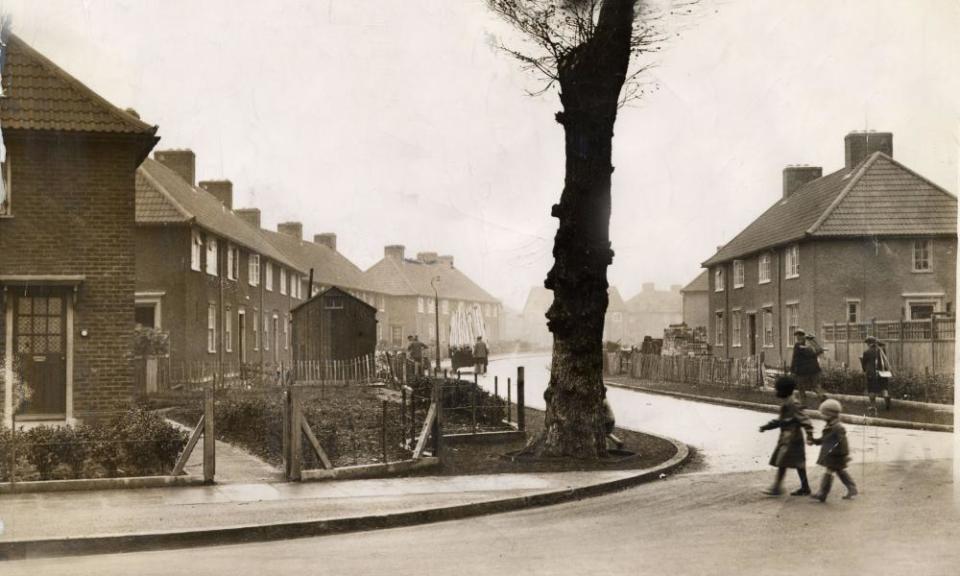Becontree centenary: residents mark century of London estate
When it was built after the first world war, Becontree in Dagenham was billed as the world’s largest ever housing estate – a modern utopia where more than 100,000 war veterans and workers from Dagenham in east London would have an inside toilet, a proper bathroom and gardens front and back.
A hundred years after the first “home for heroes” was completed in 1921, Becontree’s centenary is being marked by a series of events and public realm investments, including two fantastical playgrounds and a range of street furniture produced from upcycled rubble.
About 85,000 people still live on Becontree, with about a third of homes rented as social housing and three-bed terraces now selling for about £350,000. Many residents have been involved in the Becontree Forever project, which promises to “celebrate the radical past of the estate and reimagine its future anew”.
The Irish artist Eva Rothschild will build a playground in Parsloes Park called the Becontree Pyramids, referencing ancient architecture and the modular formats of Minecraft and Lego. It will open in July, marked by a dance performance with teenage Becontree Estate residents working with the world-renowned Studio Wayne McGregor.

The British-Nigerian designer Yinka Ilori will build a second playground in the same park, remaking an out-of-use play area with structures inspired by the park’s original pink flamingos, whose wings were clipped so they could not fly away. He will collaborate with residents of different ages and cultures to produce accessible equipment including tall totems, slides, birdwatching and bird-nesting structures and a basketball court.
The artist duo Studio Morison will make a range of terrazzo street furniture from upcycled rubble from the estate. They will activate five shopping parades, again working closely with estate residents.
The architects nimtim and the artist Katie Schwab, commissioned in partnership with the Royal Institute of British Architects (RIBA), will co-design three new public squares with local residents, reimagining green spaces at the end of terraces as places for people to meet and play.
The Portuguese artist Leonor Antunes will work with fabricators on the estate to produce a series of modernist commemorative plaques to celebrate residents from the estate’s past – both famous names as well as unsung heroes. Those who grew up on Becontree include Alf Ramsey, Terry Venables, Max Bygraves, Dudley Moore, and the former archbishop of Canterbury George Carey.
Other projects include an audio work by the former Dagenham resident Larry Achiampong and a major exhibition at RIBA in September 2021.
The commissions are all produced and curated by Create London, an arts organisation which led the east London cultural programme for the 2012 Olympics.
The programme is supported by the London borough of Barking and Dagenham using its Community Infrastructure Levy, a charge paid by developers to help mitigate the impact of their developments on the local community, as well as the National Lottery Heritage Fund.
The council hopes the schemes will bring together a community which has fragmented as major local employers have closed (such as the May & Baker chemical plant) or, as in the case of Ford, scaled back significantly. As a result, in recent years, many residents must travel outside the borough for employment.
Habda Rashid, a senior curator from Create London, said Becontree was much more diverse now than when it was built, with almost half of residents coming from black or minority ethnic backgrounds – many from Nigeria and Ghana.
Becontree Together would tell their stories as well as those of the original inhabitants, Rashid said. “It’s really important that we shift that lens, so that we are not just telling the same stories, we incorporate the histories of other people.”

 Yahoo Movies
Yahoo Movies 
